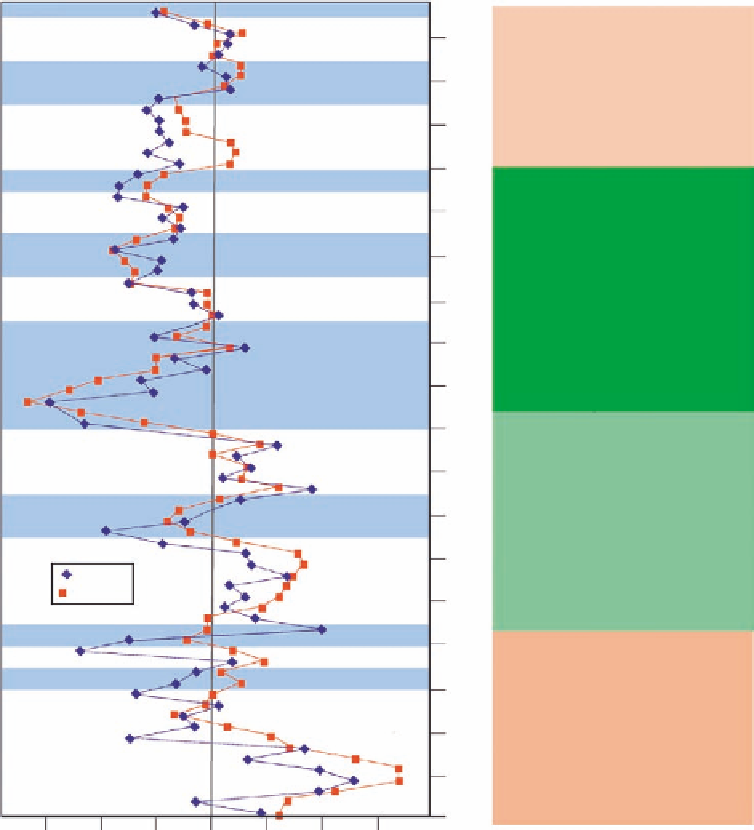Geology Reference
In-Depth Information
Obama
Policy Approach Ambiguous
Free Market vs Merit
Bush
2004
1996
Clinton
Progressive Science Consensus
Eliminated in Legislature, 1994
Progressive Science Consensus
Elliminated in Executive, 1980
Bush
Reagan
1988
1980
Carter
1972
Nixon
Great Society, 1964
Final Pulse of Scientific Consensus
Johnson
Kennedy
1964
1956
Eisenhower
Maintaining Progressive
Consensus
Truman
1948
Roosevelt
1940
Electoral Realignment, 1934
1932
Hoover
Coolidge
Harding
1924
Initiating Progressive
Consensus
1916
Wilson
Taft
Roosevelt
McKinely
Merit-Based Organizations
Remove Science From Politics
1908
House
Senate
1900
Electoral Realignment, 1896
Cleveland
1892
Policy Approach Ambiguous
Harrison
Cleveland
Patronage System vs Merit
1884
Garfield/Arthur
Hayes
Grant
1876
Reform Election, 1876
Scientfic Consensus Innovation
1868
Johnson
Lincoln
1860
80
Democratic
70
60
50
60
70
80
Republican
Percent of seats
-
Figure 15.1.1. US election results from 1860
2008 and policy phases.
agencies and bureaus. This consensus produced protective regulatory authority for food and drugs, restricted child
labor, allowed labor union greater latitude to organize, as well as passing Prohibition over the subsequent 20 years.
'
Report on the Arid Lands
The first of Powell
was to create irrigation districts. Before
Congress was willing to act on this proposal based on scientific evidence, a generation of dry land farmers met
ruin, with close to 66% of homesteaders in the last decades of the nineteenth century failing (Stegner, 1954,
pp. 202
s suggested bills in the
s scientific predictions became all too real and unpleasant experiences for hundreds of
thousands of homesteaders on the plains. Either the railway barons, or the ranching kings, or God, or the failure
of the rains, or the personal foibles and failures of individuals were blamed for the financial ruin and human
misery that resulted (Limerick, 1987). Rarely was the true culprit blamed: a failed public policy decision
template. Slowly, the sensibility of Powell
-
242). Powell
'
s recommendations for community financed irrigation infrastructure
became apparent to a majority of elected officials. Additionally, by this point, the USGS had a 20-year track
record of producing quality information for Congress. Their recommendations were accepted as more trust-
worthy for the generation of
'
s time, and the authority of the Survey
could be added to the arguments used to persuade wavering legislators to join a majority to forge a new
consensus position.
“
modern legislators
”
elected since Powell
'
The core of Powell
s second suggested bill, to organize pasturage districts, was taken up by members of the 73rd
Congress and resulted in passage of the Taylor Grazing Act in 1934. This legislation marked the end of the old
'

